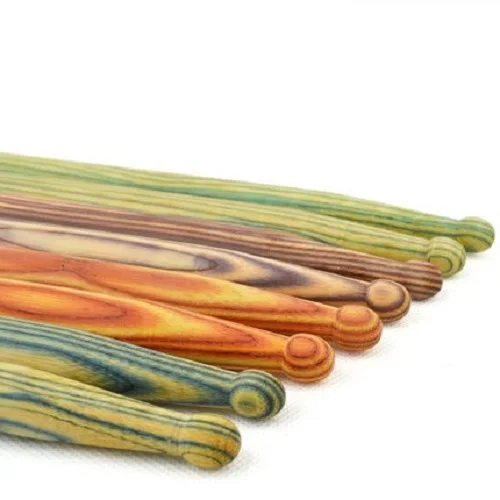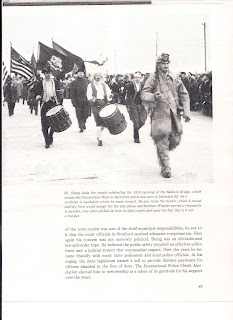Story behind the sound: Rare Battle of New Orleans drum on auction block
http://www.wwltv.com/news/local/story-behind-the-sound-rare-battle-of-new-orleans-drum-on-auction-block/355069246In a quiet room filled with art, antiques, jewelry and other auction items valued in the hundreds of thousands of dollars, it’s no surprise that a snare drum might create the most noise. Probably no one has played the drum in close to 200 years but it could fetch up to $250,000 at an auction next weekend. It’s not the sound, but the story of this drum that’s important.
Its title in the Neal Auction Company catalog is a good starting point: “The Exceptionally Important Jordan B. Noble Infantry Snare Drum.” The drum, which is part of a collection of some 200 items up for bid, likely picked up that descriptive name from its former owner, entrepreneur and collector Gaspar Cusachs, who assembled a collection of more than 200 pieces of local history before his death in 1929.
You may not know Cusachs’ name, but the name Jordan Bankston Noble (which is signed inside the drum) is one you should learn more about. The drum belonged to Noble, who many historians believe was born a slave in Georgia sometime around 1800 and is best known as the teenage drummer who beat the call to arms for General Andrew Jackson’s troops at the Battle of New Orleans. You can imagine how important the role of a military drummer would be on the battlefield, keeping soldiers in step as they marched towards victory.
According to the National Park Service, the teenage Noble joined the U.S. Army in 1813 as a free drummer in the 7th U.S. Regiment, under the command of Gen. Jackson. "Noble was one of nearly 900 free men of color and slave volunteers that had swollen Jackson’s defenses leading into the British invasion (at New Orleans)," according to historians at the Park Service.
“You can’t get any more local than the Battle of New Orleans, and to have an actual piece owned by someone who was there, you can’t get much better than that,” said Marc Fagan, vice president of consignments for Neal Auction Company.
Writing in Louisiana Cultural Vistas, music historian Jerry Brock said that Jordan Noble “was arguably the most celebrated black musician in 19th century New Orleans,” adding that “in a life that bridged nine decades, Noble advanced the cause of black freedom and human rights.” After his death in 1890, The Daily Picayune ran Noble’s obituary under the headline “Answered the Last Roll: Death of the Drummer Boy of Chalmette.”
The newspaper said “many will remember the white-headed old man and his well-worn drum.”
“He broke down race and class barriers as a soldier (veteran of four wars), musician and statesman. He pioneered New Orleans marching music and parade traditions and demonstrated bravery, free spirit and dignity in his personal quest for liberty and will to survive and prosper,” Brock contends.
“Through his music and community involvement Jordan Noble nurtured a joy of life and love for humanity in a city that underwent massive expansion and sociocultural upheaval during his time.”
Jordan Noble (Photo: Neal Auction Co.)
Following the Battle of New Orleans, Noble continued his military service. According to Neal Auction Company, Noble worked under President Andrew Jackson in 1836 during the Second Seminole War as a member of the Louisiana Volunteers. He was a drummer for the Mexican Artillery during the Mexican War in 1846 (under the command of Gen. Zachary Taylor) and during the Civil War, he served on the Union side as Captain of Company C of the 7th Regiment of the Louisiana Volunteer Infantry.
Though he was sold back into slavery four times, Noble (who died a free man) is also well-regarded as an important leader in the early movement for racial equality. He is an important music figure who gave regular performances playing his drum at public events, where crowds were drawn to see the man known as Gen. Andrew Jackson’s drummer.
"In my opinion, the drum is one of the most important historical artifacts that we have here in New Orleans," said Shelene Roumillat, an historian who researched Noble for her Ph.D. in history at Tulane University. "His military career continued after the Battle of New Orleans and the fact that he returned to the city in the 1850s is important because at that time there was a resurgence of the free men of color who were veterans of the battle."
She pointed out that those veterans began to be included in Battle of New Orleans anniversary parades in the city at that time and Noble became the most celebrated veteran of the free color veterans in the 1850s. "It was a very strategic move on the part of people in power in New Orleans to combat criticism of slavery and the way blacks are treated in the South," she said. "He becomes and remains the most celebrated veteran of the free color veterans. That's because of his music and I think the sentimentality of memories attached to the Battle of New Orleans, which is one of the proudest moments in the city's history."
Noble played at events all across the city, she said, becoming the first black man to lead parades through the streets without any official sanction or invitation to do so. "He takes it upon himself with a fife player to go around the city and play, including on New Year's, where they played a salute to the military, the city and the government. The fact that he's black and is doing this is important. Nowhere else in the country is that happening."
The drum which is on the auction block was believed to have been displayed at the 1904 World’s Fair in St. Louis and at the Louisiana State Museum since 1909. Neal Auction Company, which acquired the drum more than a year ago, estimates the drum’s value between $200,000 and $250,000. Fagan, who called the drum truly a one-of-a-kind piece, said there is a chance that a museum or institution will snap it up next Friday when it goes up for sale.
“Obviously we can’t determine who buys it but we certainly inform institutions about the opportunity and if it ends up in their hands, we’re more than happy. We do hope that happens,” he said.
“The flag also was the property of Jordan Noble and the museum had it displayed as being given by the ladies of New Orleans to Andrew Jackson to commemorate his victory,” said Fagan. “At some point, the history is not very clear but it was given to Noble by Jackson.” The flag, which Cusachs acquired from Noble’s wife, is valued between $200,000 and $250,000.
The Noble items are just two of the 200 intriguing items up for bid Dec. 2 as part of the Cusachs collection. Other pieces include weapons, swords, rare maps of Louisiana and New Orleans, paintings and manuscripts signed by historical figures such as Napoleon Bonaparte, President James Madison and Gov. William C.C. Claiborne. The pieces are described as being instrumental in early exhibits displayed at the Louisiana State Museum at the turn of the 20th century. The collection was on loan to the state museum for many years but returned to private hands and is now being sold at auction.
---
Historian Shelene Roumillat will give a lecture before the auction Dec. 2 on Jordan Noble and the Battle of New Orleans. The lecture at 11 a.m. will proceed the auction at Neal Auction Company, 4038 Magazine St.


































